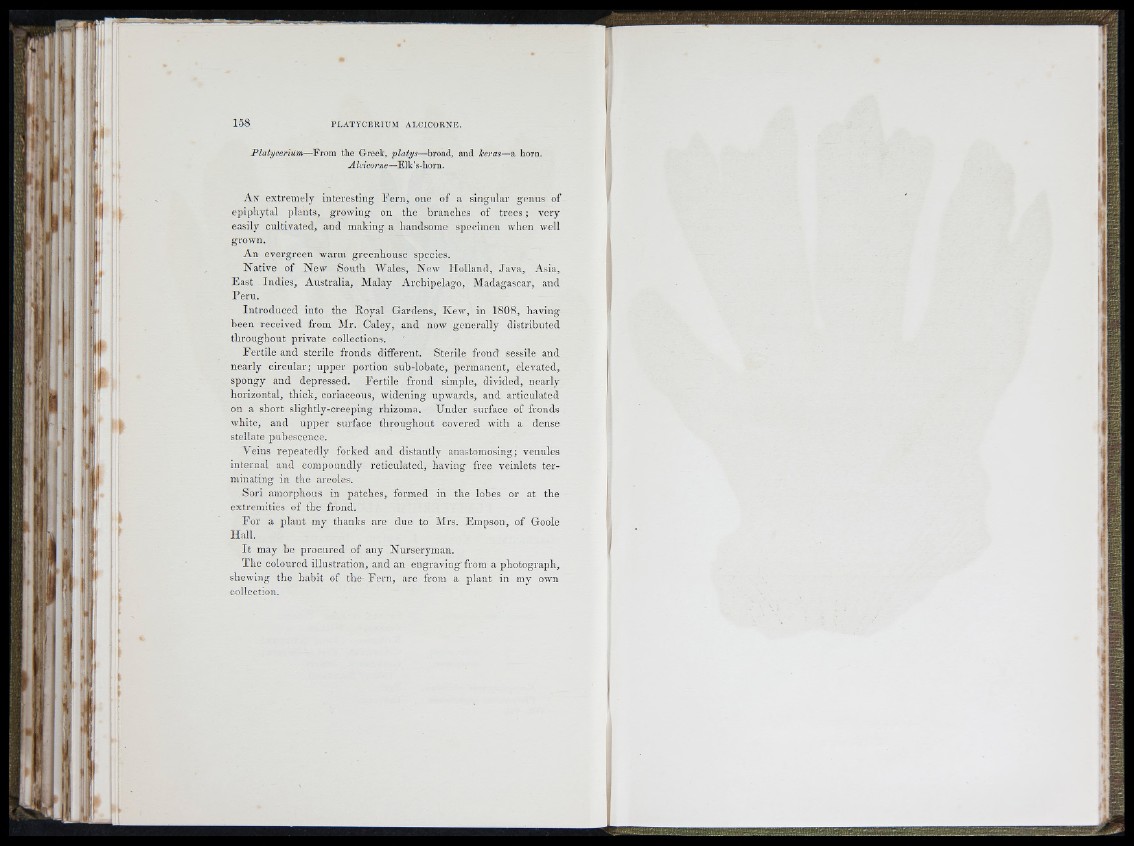
Pla tyc erium—-From the Greek, p la ty s—broad, and keras—a horn.
A fcic'orne—Elk’s-honi,
A n extremely interestiug F e rn , one of a singular genus of
epiphytal plants, growing on the hranchcs of tr e e s ; very
easily cultivated, and making a handsome specimen when well
grown.
An evergreen warm greenhouse species.
Native of New South AVales, New llo lla n d , Jav a , Asia,
F a s t Indies, Australia, Malay Archipelago, Madagascar, and
Peru .
In tro d u c ed into the Royal Gardens, Kew, in 1808, having
been received from Air. Caley, and now generally distributed
throughout private collections.
F e rtile and sterile fronds different. Sterile frond sessile and
nearly circular; upper portion suh-lobate, permanent, elevated,
spongy and depressed. F e rtile frond simple, divided, nearly
horizontal, thick, coriaceous, widening upwards, and articulated
on a short slightly-creeping rhizoma. U nder surface of fronds
white, and up p e r sui'face throughout covered with a dense
stellate pubescence.
Veins repeatedly forked and distantly anastomosing; venules
internal and compoundly reticulated, having free veinlets te rminating
in the areoles.
Sori amorphoLi.s in patches, formed in the lobes or at the
extremities of the frond.
Fo r a plan t my thanks are due to Airs. Empson, of Goole
Hall.
I t may be procured of any Nurseryman.
The coloured illustration, and an engraving from a photograph,
shewing the habit of the F e rn , are from a p lan t in my own
collection.